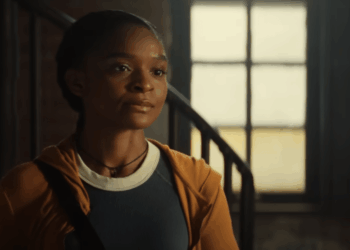In an email interview, the author of the triple-timeline lesbian vampire novel our critic called “sumptuous” challenged the notion that “storytelling is a zero-sum game.” SCOTT HELLER
How have your reading tastes changed over time?
I’ve gotten both harder to please, and much more evangelical about anything that delights and surprises me. I’ve also reached the point where I’m far more interested in a story that takes swings and misses than one that doesn’t try. Give me weird. Give me ambitious. Give me original.
What’s the last great book you read?
You can’t possibly expect me to pick one. “James,” by Percival Everett. “Jade City,” by Fonda Lee. “Rejection,” by Tony Tulathimutte.
What’s your go-to classic?
“The Count of Monte Cristo,” by Dumas. It’s my desert island book, not only because it’s a tome, but because no matter how many times I revisit it, I find new lines to appreciate, new narrative corners to explore.
Did attending an all-girls high school shape your sensibility as a writer?
It might not have shaped my storytelling, but it shaped my belief that I could only be limited by my own ambition. Not that anything would be easy, but that no external voice would ever be as loud as my internal one.
Why did you turn to 16th-century Spain as a setting for your new book?
Some fantasy writers take you out of your world in order to deposit you into a magical one. Others try to convince you that magic has been in your world all along. I’m one of the latter, and weaving fantasy into history, setting it alongside and in conversation with times and places we recognize, helps make it feel not only real, but deep-rooted, as if it’s been growing there all along.
Everywhere I am lucky enough to spend time, I look around and wonder, what kind of magic could be growing here. What — or who — could be carried down a pilgrimage road in 16th-century Spain? A perfect crossroads for strangers and small towns, for the known and the unknown, and the seeding of ideas, and opening of doors.
The galley includes a blurb that praises you as a “cruel” storyteller. How do you feel about that designation?
Honored. I like to think I’ve earned the descriptor not by simply twisting a narrative knife (though I’m fond of that too), but I’ve always tried to write the kinds of characters who feel real enough that you grieve them when they’re gone, whether they die on page or the story ends and you’re no longer invited to follow where they go.
You referred to your “love of the literary gray zone” in a recent New York Times piece on books that don’t fit into neat genre categories. Where does that come from?
I like to think of genre categories as expanders, not constrictors, and I’ve always had a fondness for the stories refuse to be contained, that insist on being horror and romance, or fantasy and literary, or suspense and satire.
“We’re gaslit by this business every day,” you told Publishers Weekly in 2020. Do you still feel that way?
I have had very positive experiences, and very negative ones, and a variety that fell somewhere between, and what I’ve learned from that spectrum is how lucky (and stubborn) I am, and how fickle and frustrating it is when business and art are made to coexist. I think writing is an inherently lonely pursuit, and publishing is an industry that can make it feel even lonelier. It holds certain titles up and lets others swim or sink. It puts so much of the burden for success on the author, discourages transparency, and often pits titles against each other, creating a sense that storytelling is a zero-sum game.
But I’ve also discovered the power of community. Of holding the door open for new talent and championing other voices. Of working with teams who truly believe in the work.
Is there a book in your vast output that you wish you could rewrite?
No! Not that I look back on anything I’ve written and think it’s perfect — one of the hardest lessons a creative perfectionist learns is that such a thing doesn’t exist, that the act of writing an idea down is the act of accepting its imperfection — but because each and every book is a time capsule of who I was at the time I wrote it.
How do you sign books for your fans?
I’ve had to adjust over the last few years, as the audience has grown (what a privileged statement to be able to make!). Now, the only time I get to do a live signing (as in, scribbling in the book while chatting with a reader) is at festivals. But I wanted to make “Bury Our Bones” as special as I could for as many as I could, so I agreed to sign the entire first printing. Little did I know it was 300,000 copies. It took me two and a half months of signing 7,000 copies a day, but Hopefully it was worth it!
The post V.E. Schwab’s Desert Island Book Is ‘The Count of Monte Cristo’ appeared first on New York Times.




